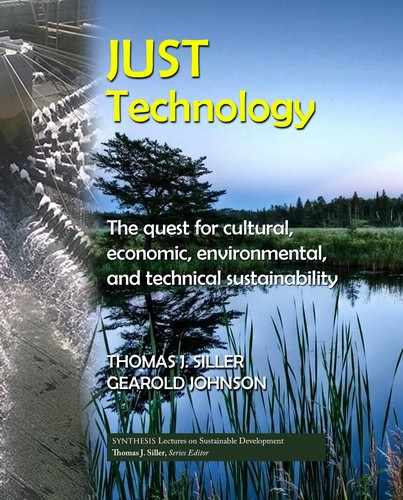12 2. JUSTICE
Currently, there is a growing movement in the engineering education community to use
technology to promote social justice [20]. Probably the most common approach is the use of
service learning projects with undergraduate students [21]. is approach explicitly involves en-
gineering students engaging in design and constructing projects that provide services to commu-
nities, typically lower income communities and populations. A popular example of this approach
is the Engineers Without Borders program (http://www.ewb-usa.org/).
As interesting and important as the topic of using technology is to promote virtues might
be, our goal in this book is to focus more on making just choices in addressing the challenges
society faces. To accomplish our goal we need to now move beyond the philosophical discussions
and become more pragmatic.
2.2 PRINCIPLE OF PRIMA FACIE POLITICAL EQUALITY
(PPEPE)
e principle of Principle of Prima Facie Political Equality (PPFPE), as defined by Shrader–
Frechette [11], is directed at decisions leading to environmental justice, which is directly con-
nected to our more comprehensive goal of Just Technology. She points out that there are two
components to this principle: distributive justice and participative justice. In her terms distribu-
tive justice:
“… requires a fair and equitable distribution of society’s technological and environmental
risks and impacts. It refers to the morally proper apportionment of benefits and burdens—
such as wealth, opportunity, education, toxic waste dumps, dirty air, and so on—among
society’s members.”
is principle provides an explicit connection between justice and technology. In our de-
velopment of Just Technology we strive to include a similar concept of distributive justice in our
decision-making, or design framework. Alternatively, Livermore and Revesz [12] discuss this
same concept in terms of cost benefit analysis. As society faces some of the great challenges in the
future, such as climate change, the concepts of PPFPE can help inform how both benefits and
burdens are distributed across the global society. ink back to the question of energy. Currently
the use of fossil fuel provides greater benefits to developed countries while the burden caused by
increased greenhouse gases are distributed globally—even then less developed countries suffer
more.
e other component, participative justice, is a necessary supportive element to distribu-
tive justice. Again in Shrader–Frechette’s words:
“In attempting to define a principle of participative justice as part of the PPFPE, one is
seeking to remove the unjust constraints that some people have over other people’s lives and
actions.”
is might seem heretical to technologists, but this call for participative justice should
make us consider who should be making decisions about the choice of technical approaches?
..................Content has been hidden....................
You can't read the all page of ebook, please click here login for view all page.
